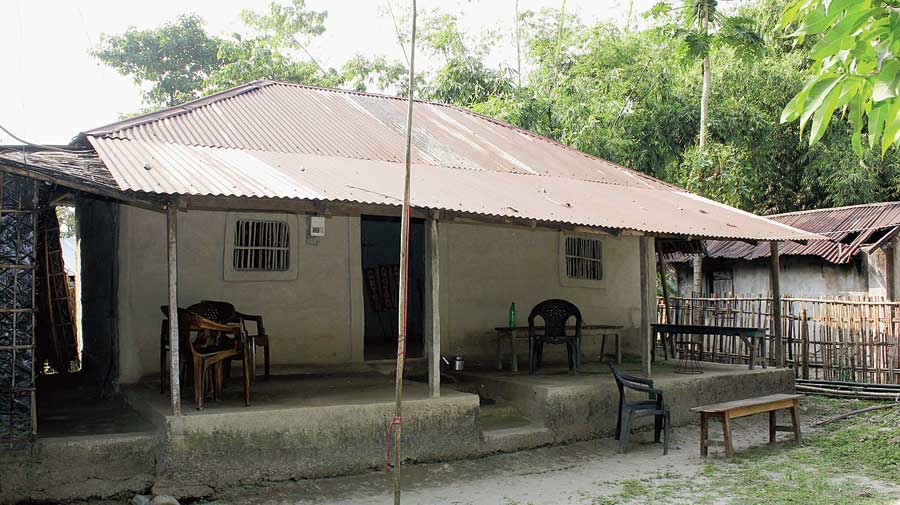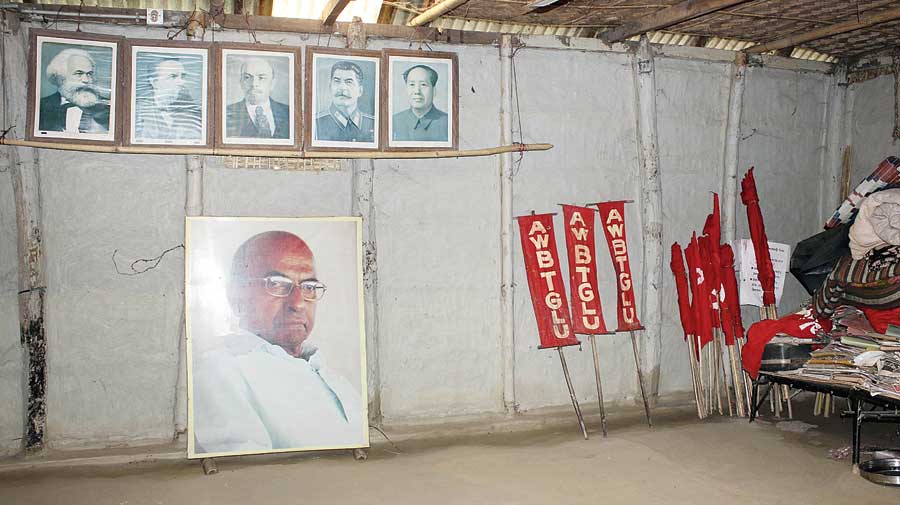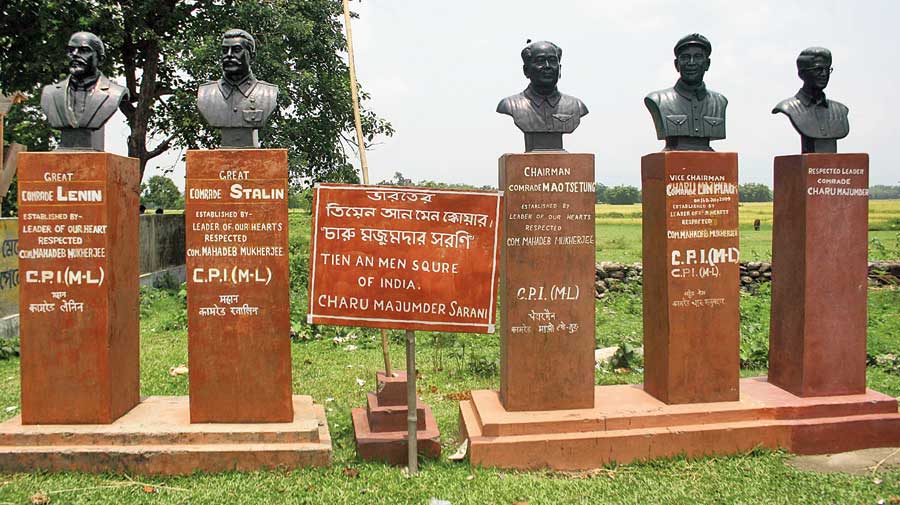The promise of an “adarsh gram (model village)” continues to elude Sebdullajote in Naxalbari.
Located around 25km from Siliguri, this nondescript hamlet nestled in the Terai in Darjeeling district is the cradle of the peasants’ uprising in 1967 that culminated in the Naxalbari Movement.
Back in 2014, S.S. Ahluwalia, the then BJP MP of Darjeeling, had come to Sebdullajote, the home of firebrand Naxalite leader Kanu Sanyal, and promised to develop it and some adjoining hamlets under the Hatighisha panchayat into model villages under the Pradhan Mantri Adarsh Gram Yojana (PMAGY), a scheme announced by Prime Minister Narendra Modi from the ramparts of the Red Fort.

Kanu Sanyal’s home at Sebdullajote in Naxalbari Telegraph picture
Under the scheme, each MP has to choose and develop a “model village” every year in his or her constituency.
However, even after seven years, the areas under the Hatighisha panchayat are far from being model villages, still struggling for basic amenities such as good roads, drinking water and healthcare facilities.
“It seems to be yet another hollow promise of yet another BJP leader. Ahluwalia had shown interest in developing the area, keeping in mind its rich political history and in remembrance of Kanubabu who worked for the people till his last breath. I had sent a number of proposals to Ahluwalia for the development of the village but nothing was done,” said Jyasthamohan Roy, the former CPM pradhan of Hatighisha.
Even today, the 50,000-odd residents of Hatighisha have to depend on the Manjha, a local stream, for drinking water.
Roy said that under the PMAGY, there had been elaborate plans to develop rural areas, introducing facilities such as banking infrastructure and Wifi. According to him, only two roads have been rebuilt in the area near Asian Highway II. “There is a sharp contrast here. On one hand, we have a four-lane international highway nearby. On the other, villages in the neighbourhood don’t even have basic facilities,” Roy said.

A portrait of Sanyal under pictures of communist stalwarts Telegraph picture
Sebdullajote, where Sanyal’s hut still stands 11 years after his death, and the neighbouring villages have only one sub-health centre, where doctors visit once a month.
Dipu Haldar, a close associate of Sanyal, said: “In most cases, villagers have to travel 10km to reach the block hospital in Naxalbari even for basic treatment. What disappoints us is that Kanuda’s struggle for socio-economic development of the poor people seems to have come to naught because of the politicians who make tall claims about working for the people. It is unimaginable that people who live barely 25km from the largest town of north Bengal have to depend on a stream for drinking water.”
A few months ago, the public health engineering department had installed two wayside taps after Haldar and some other locals had submitted a memorandum, but both are lying out of order.
The Asian Highway also touches Bengaijote, another village where the peasants’ uprising had erupted in 1967 after police had opened fired and killed nine women and two children.
The locality has a “martyrs’ column” in the name of the victims, along with the busts of Lenin, Stalin, Mao Tse Tung, Lin Piao and Charu Mazumdar, the foremost leader of the Naxalbari movement.
In 1967, peasants, particularly sharecroppers, had rebelled against jotedars (owners of vast stretches of agricultural land) and private moneylenders in Naxalbari. The uprising began after a sharecropper who tried to till a piece of land after he had been evicted by the landlord was beaten up.
Hundreds of peasants rose in protest, and led by Left leaders such as Charu Mazumdar, Kanu Sanyal and Jangal Santhal, began seizing land from the landlords. Food grains and arms were also looted.
The state government mobilised the police. The rebellious peasants resisted, which led to the death of a sub-inspector during an ambush. In retaliation, the police opened fire in Bengaijote village, killing nine women and two children on May 25, 1967.
As the situation continued to remain tense, the state deployed paramilitary forces, which led to the arrests of some leaders while others went underground.
The movement continued to spread in different corners of the country as leaders like Mazumdar and Sanyal walked out of the CPM and floated the CPIML.
In the seventies, the movement intensified, particularly among students in Bengal, before it was brutally suppressed. The movement also suffered a setback following Mazumdar’s death in 1972.
“For political leaders and researchers, Naxalbari is a unique place because of its political history. The block needs to be developed and places like the hut of Kanu Sanyal where he breathed his last in 2010 and the site of the shooting in Bengaijote should be conserved. Unfortunately, no such initiative has been taken so far,” said Ajit Kumar Ray, a retired professor.

